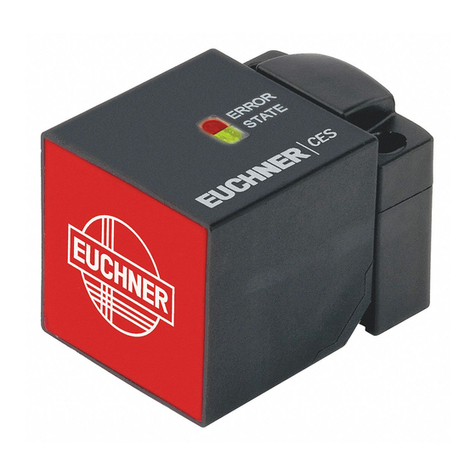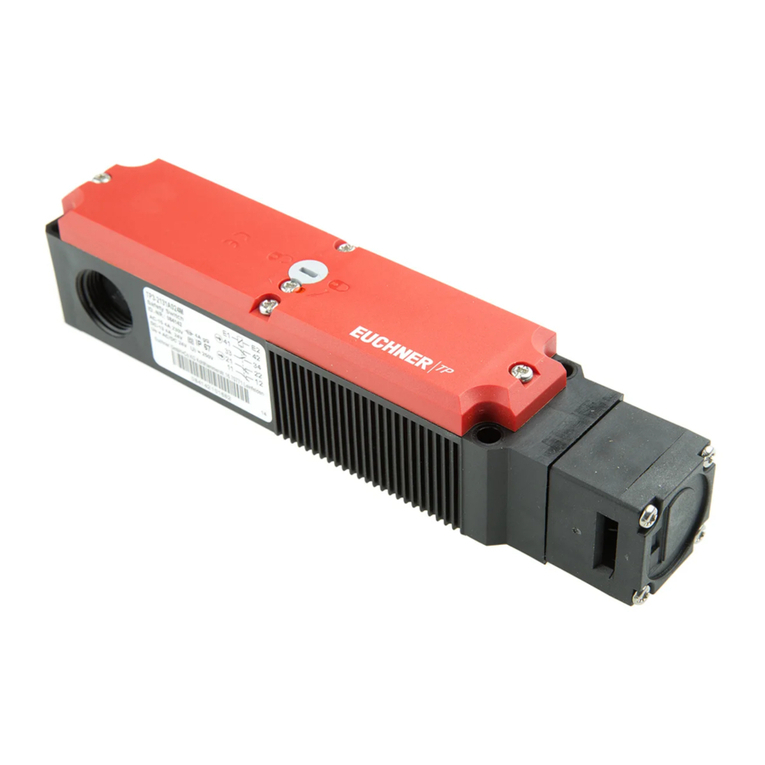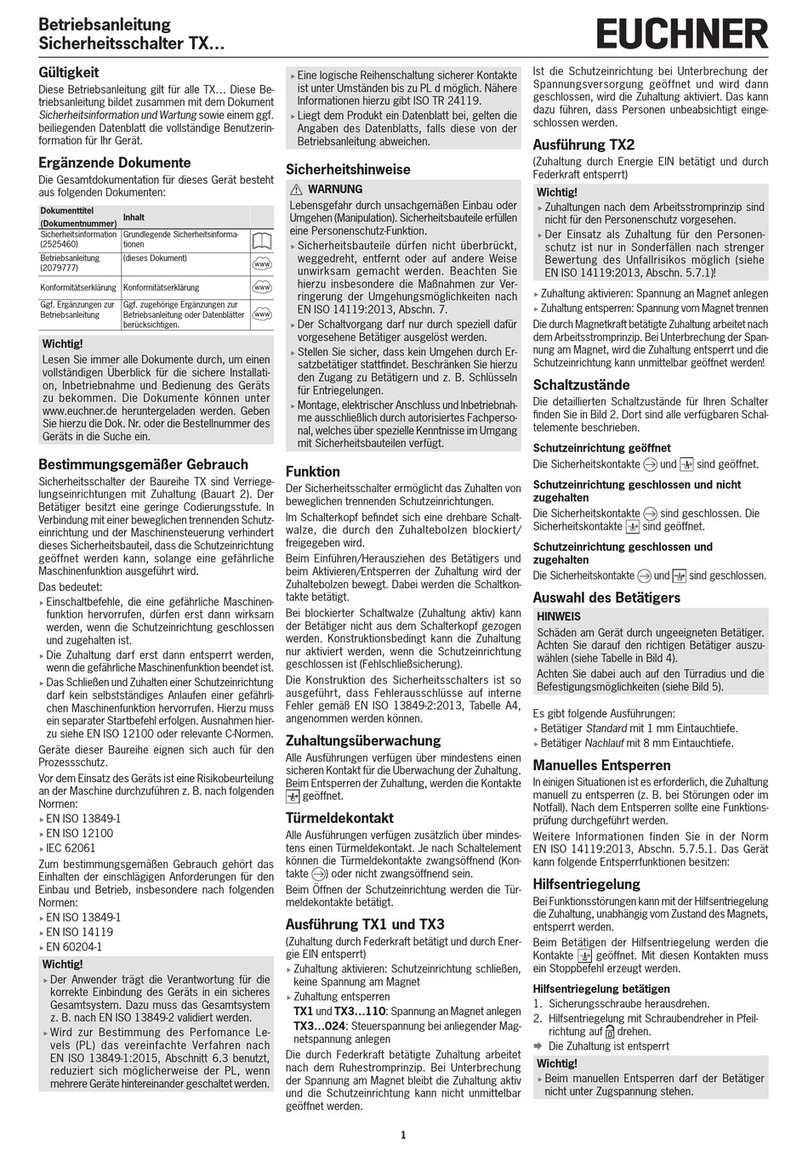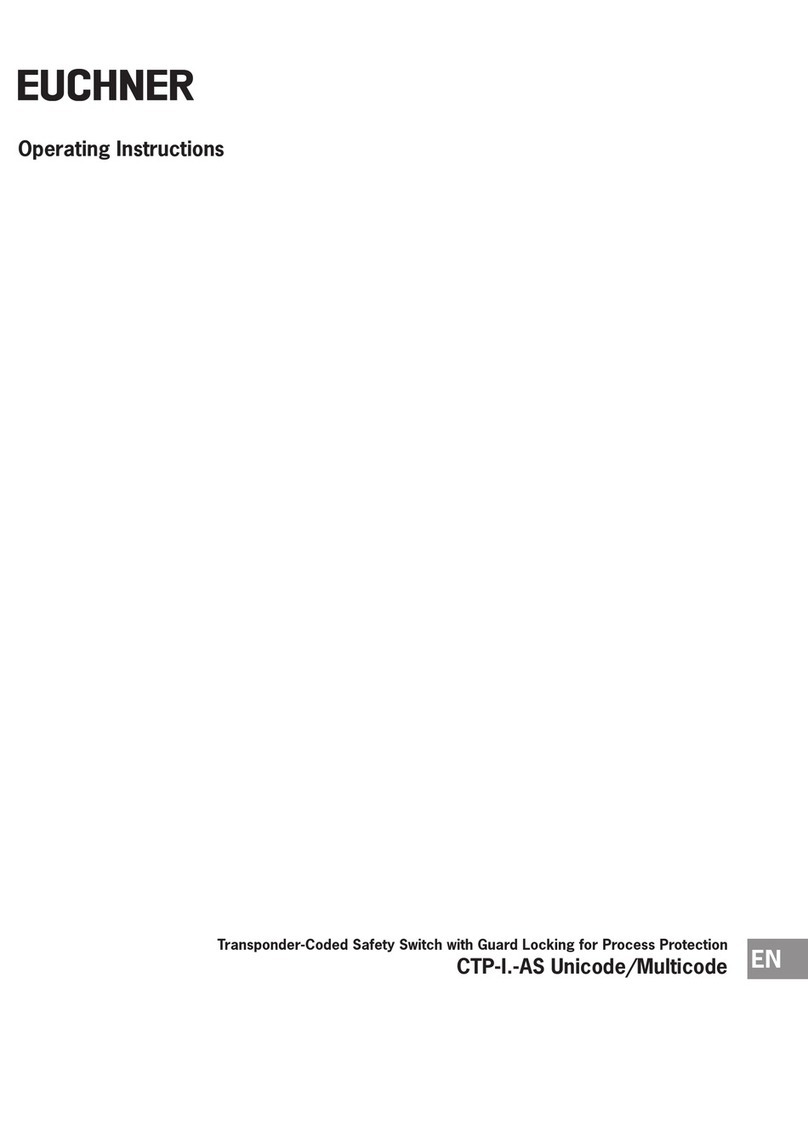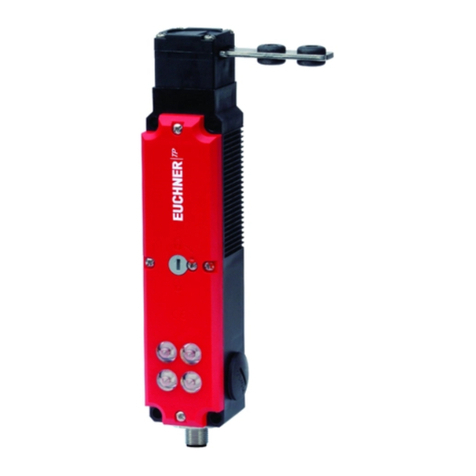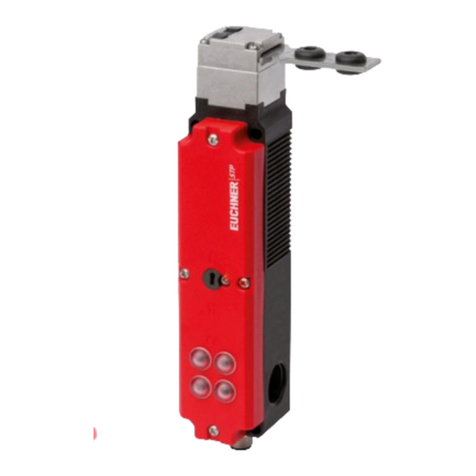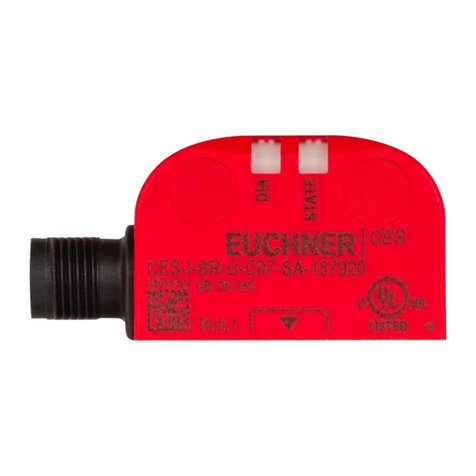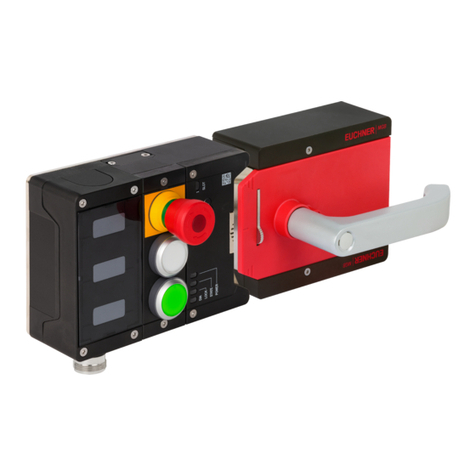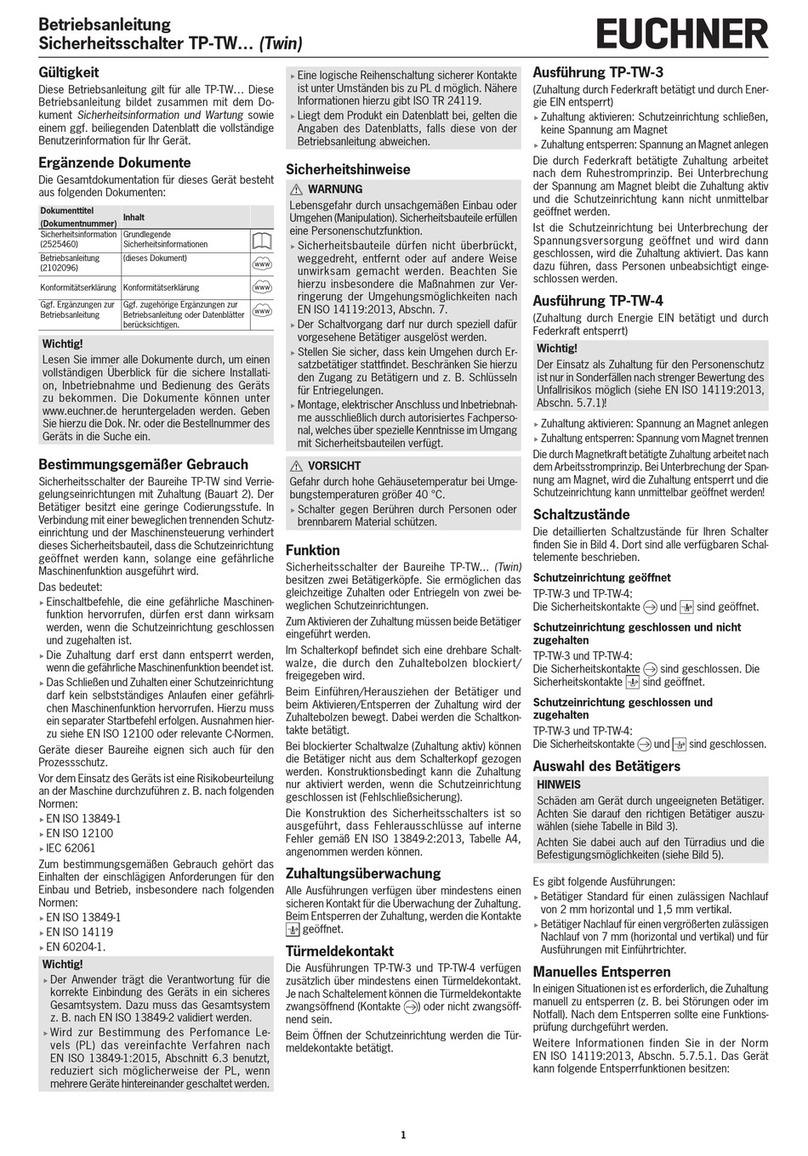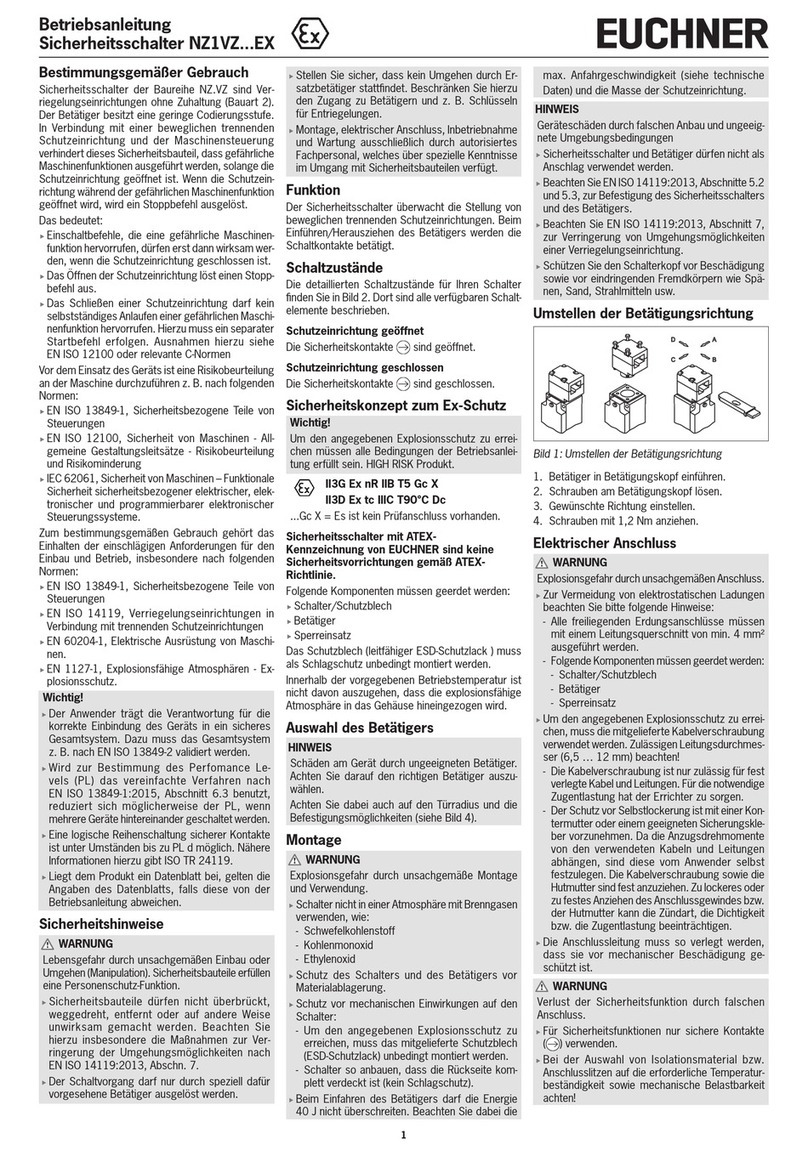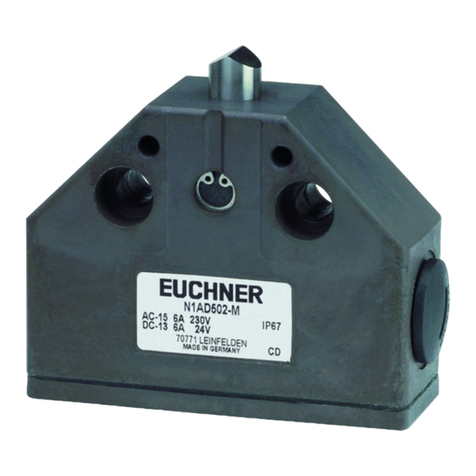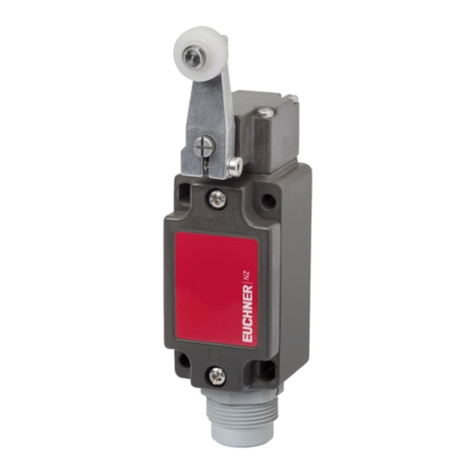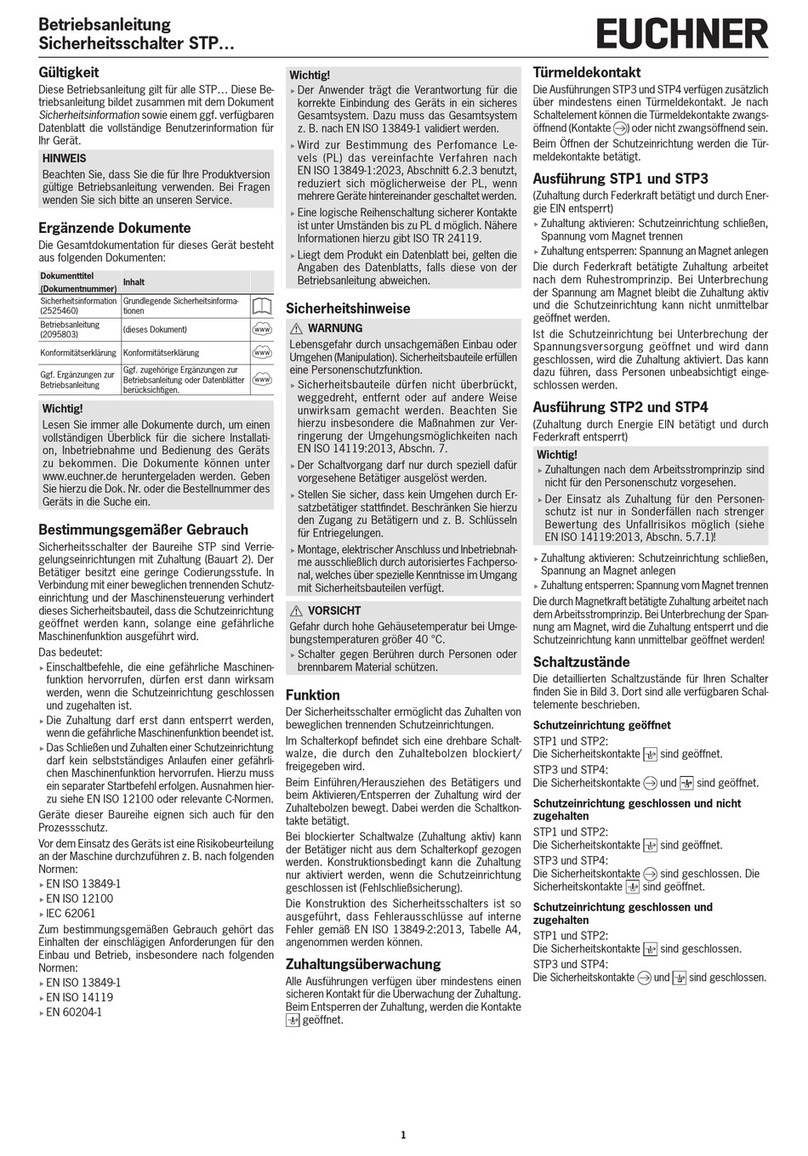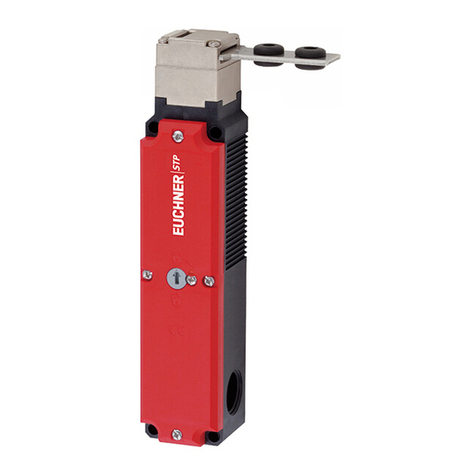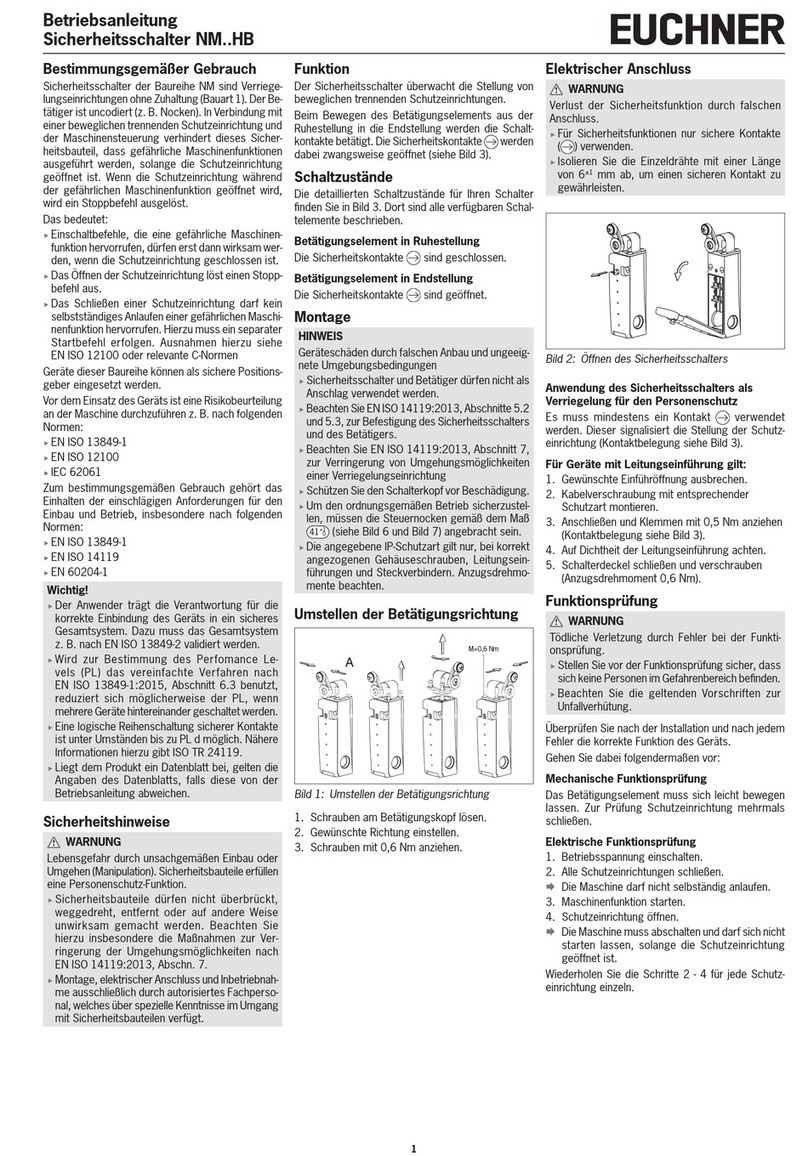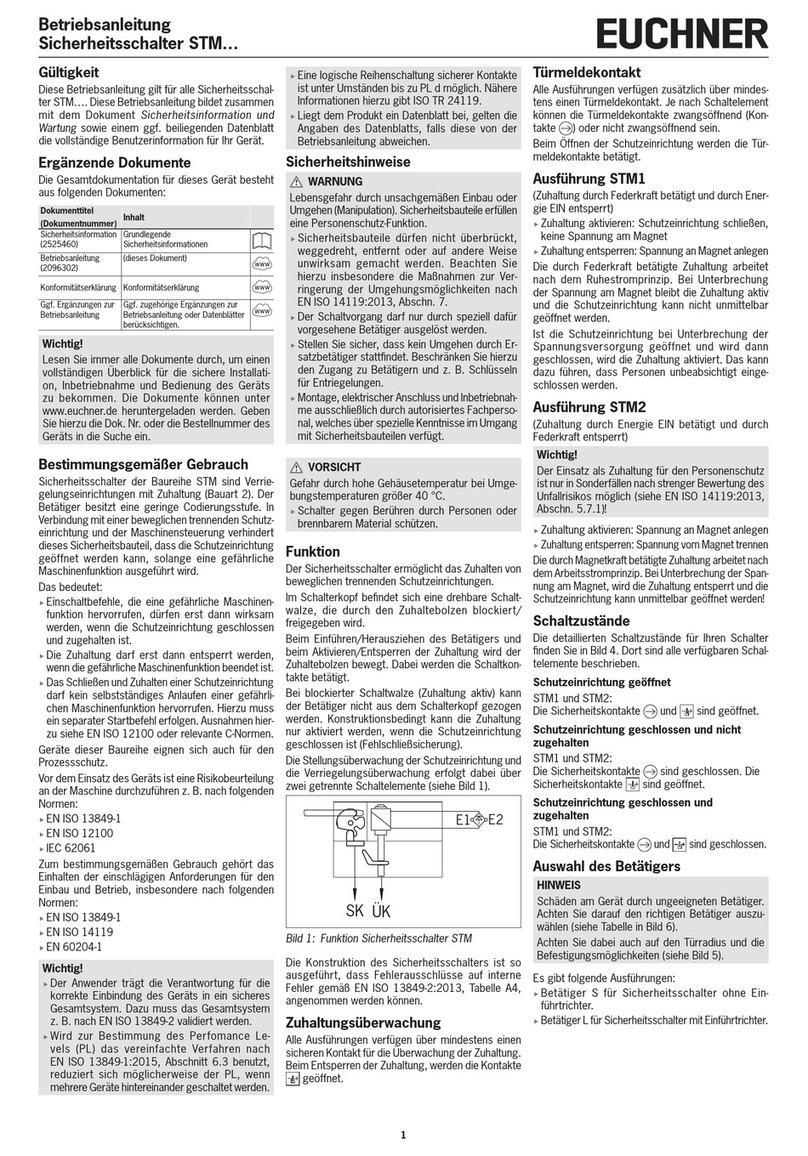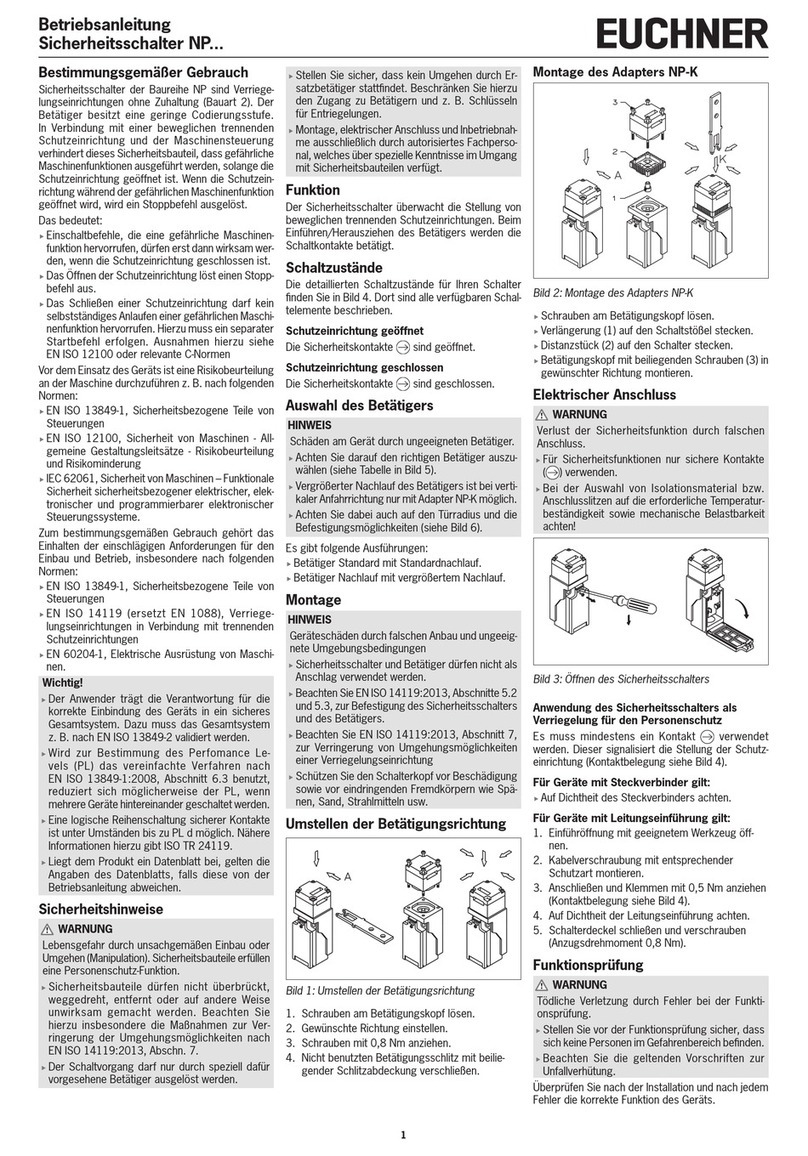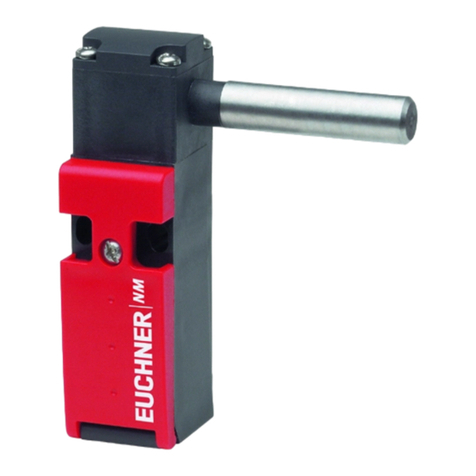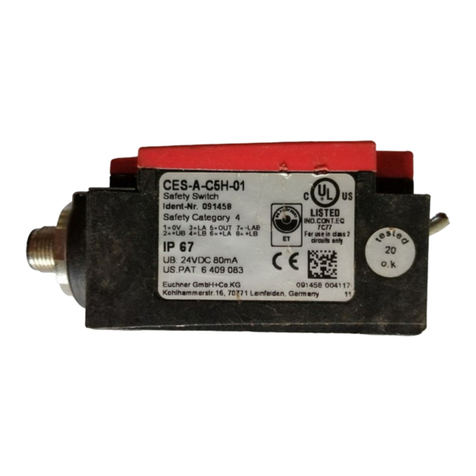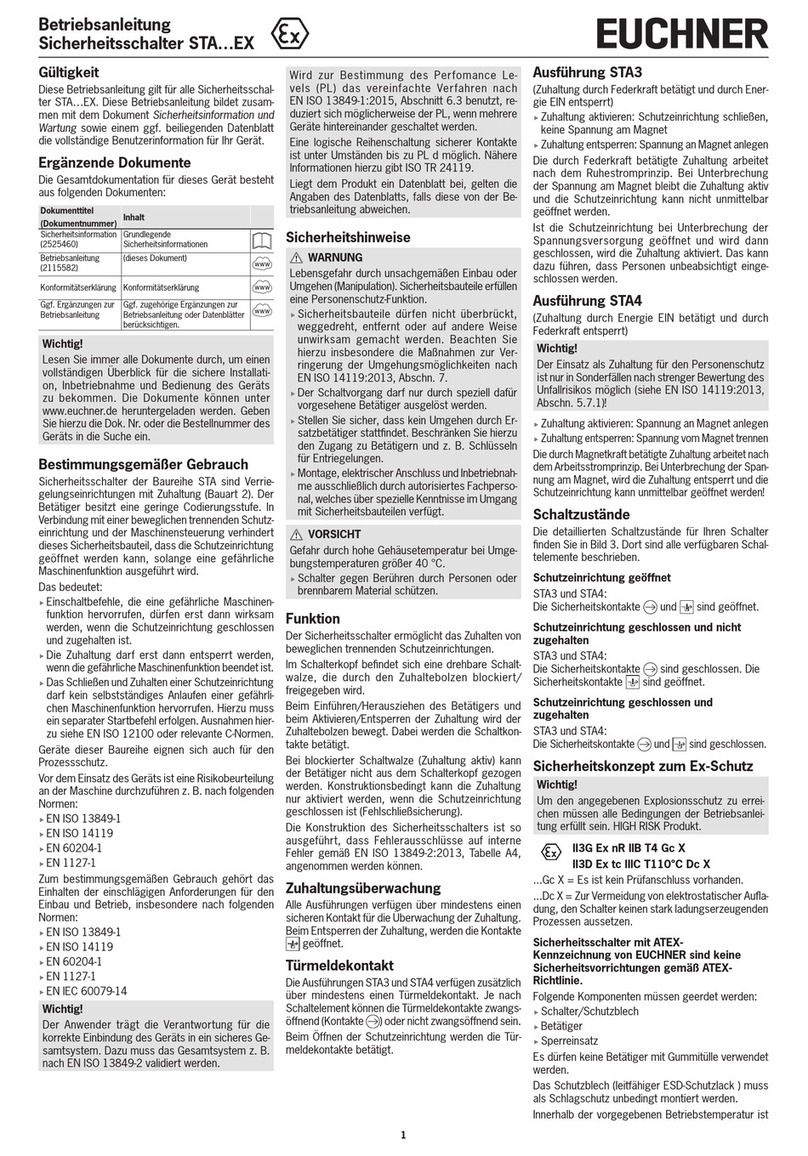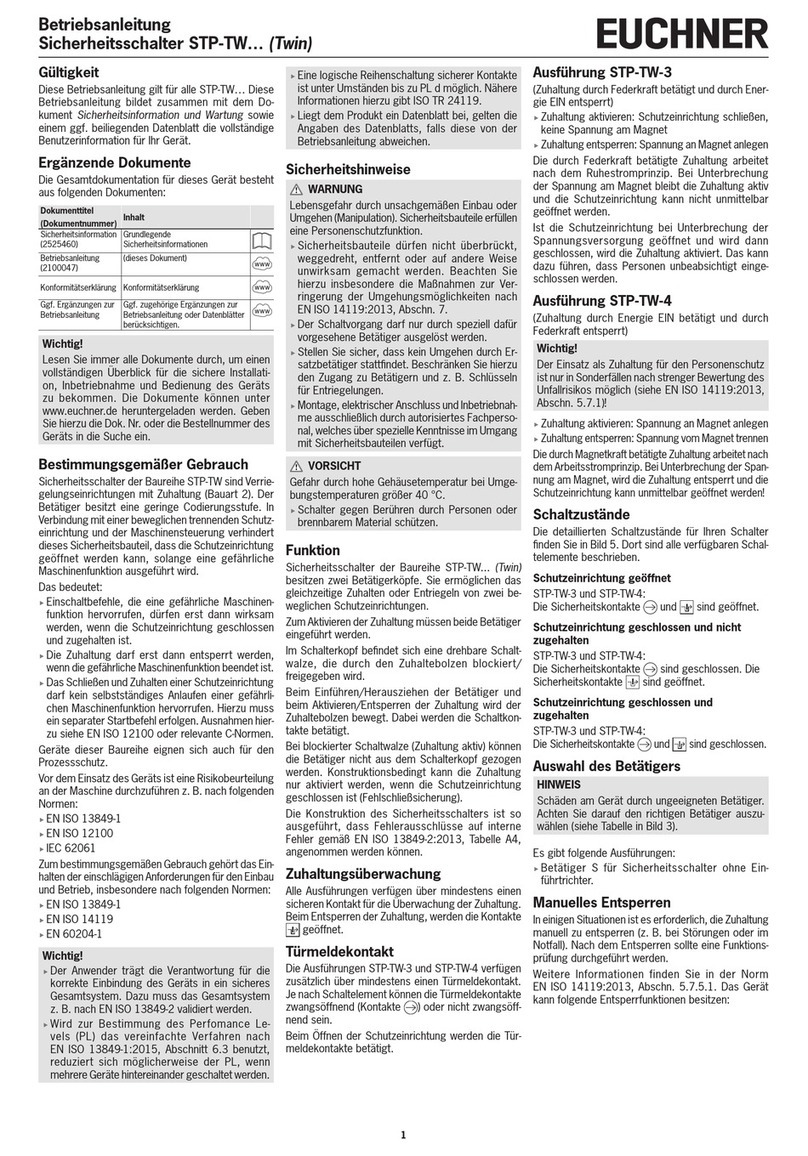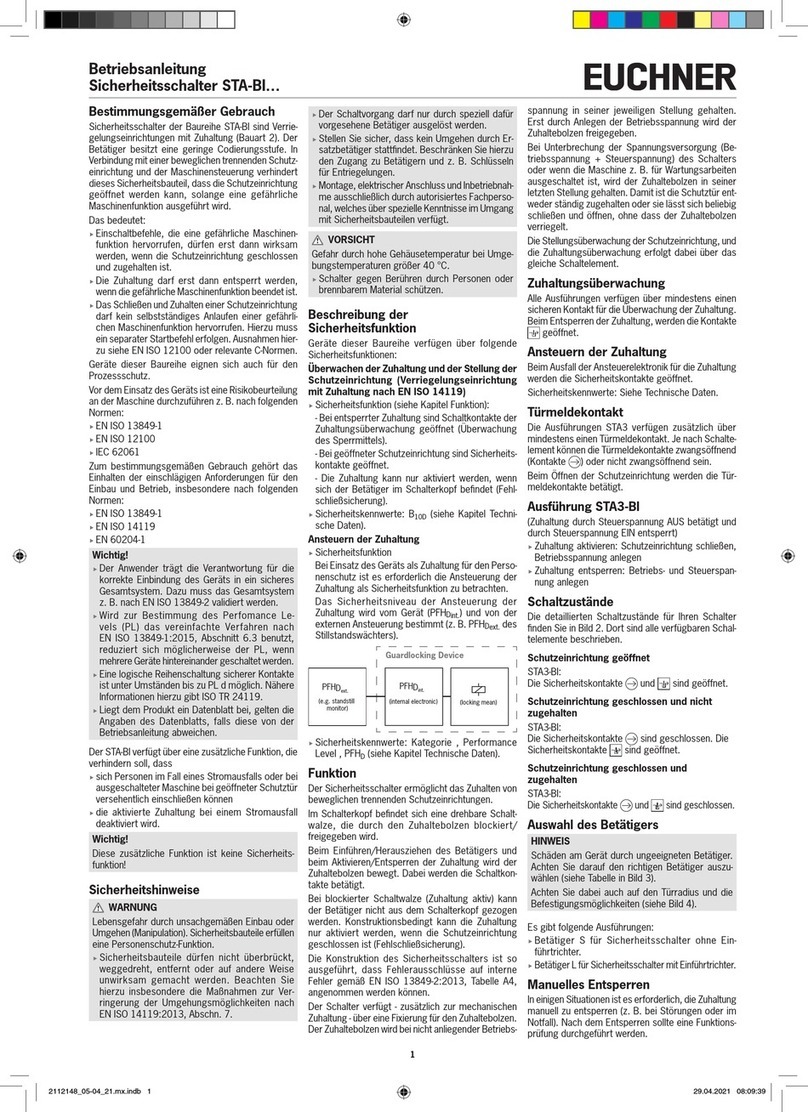
4
Operating Instructions
Precision Single Limit Switches N01/NB01/SN01
Correct use
Precision single limit switches series N01/NB01/
SN01 are interlocking devices without guard locking
(with safety function). The actuator is uncoded (e.g.
dog). In combination with a movable safety guard
and the machine control, this safety component pre-
vents dangerous machine functions from occurring
while the safety guard is open. A stop command is
triggered if the safety guard is opened during the
dangerous machine function.
For general applications, snap-action switching
elements that are not positively driven are used. For
usage as safety switches, only the switching element
ES588 with positively driven NC contacts is allowed.
This means:
Starting commands that cause a dangerous ma-
chine function must become active only when the
safety guard is closed.
Opening the safety guard triggers a stop com-
mand.
Closing a safety guard must not cause automatic
starting of a dangerous machine function. A
separate start command must be issued. For
exceptions, refer to ENISO12100 or relevant
C-standards.
Devices from this series can be used as safe position
encoders.
Before the device is used, a risk assessment must
be performed on the machine, e.g. in accordance
with the following standards:
ENISO13849-1, Safety of machinery – Safety-re-
lated parts of control systems – Part 1: General
principles for design
ENISO 12100, Safety of machinery – General
principles for design – Risk assessment and risk
reduction
IEC62061, Safety of machinery – Functional
safety of safety-related electrical, electronic and
programmable electronic control systems
Correct use includes observing the relevant require-
ments for installation and operation, particularly
based on the following standards:
ENISO13849-1, Safety of machinery – Safety-re-
lated parts of control systems – Part 1: General
principles for design
ENISO14119, Safety of machinery – Interlocking
devices associated with guards – Principles for
design and selection
EN60204-1, Safety of machinery – Electrical
equipment of machines.
Important!
The user is responsible for the proper integration
of the device into a safe overall system. For this
purpose, the overall system must be validated,
e.g. in accordance with ENISO13849-2.
If the simplied method according to section 6.3
of ENISO13849-1:2015 is used for determining
the Performance Level (PL), the PL might be re-
duced if several devices are connected in series.
Logical series connection of safe contacts is
possible up to PLd in certain circumstances.
More information about this is available in
ISOTR24119.
If a product data sheet is included with the prod-
uct, the information on the data sheet applies
in case of discrepancies with the operating
instructions.
Safety precautions
WARNING
Danger to life due to improper installation or due
to bypassing (tampering). Safety components
perform a personal protection function.
Safety components must not be bypassed,
turned away, removed or otherwise rendered
ineffective. On this topic pay attention in partic-
ular to the measures for reducing the possibility
of bypassing according to ENISO14119:2013,
section 7.
Mounting, electrical connection and setup only
by authorized personnel possessing special
knowledge about handling safety components.
Function
Precision single limit switches are used for posi-
tioning and control applications in mechanical and
systems engineering.
The switching elements are actuated by means of
plungers. Different plunger types and trip dogs are
used depending on the application (operating point
accuracy and approach speed) (see Figure 2).
In general applications the plunger is actuated by
trip dogs in accordance with DIN 69639 which
are mounted with an interference t in trip rails in
accordance with DIN 69638.
The switching contacts are actuated when the actu-
ating element is moved from the free position to the
end position. The safety contacts are positively
opened in this process.
Switching states
The detailed switching states for your switch can be
found in Figure 11. All available switching elements
are described there.
Actuating element in free position
The safety contacts are closed.
Actuating element in end position
The safety contacts are open.
Mounting
NOTICE
Device damage due to improper mounting and
unsuitable ambient conditions.
Safety switches and actuators must not be used
as an end stop.
Observe ENISO14119:2013, sections 5.2 and
5.3, for information about fastening the safety
switch and the actuator.
Observe ENISO 14119:2013, section 7, for
information about reducing the possibilities for
bypassing an interlocking device.
It is imperative that dimension
-0,5 (distance
from switch reference surface to trip dog, see
Figure 3) is maintained in safety circuits to ensure
safe contact opening.
Protect the switch head against damage.
Protection against environmental
inuences
Safety venting valves (see Figure 3, for example)
are used to compensate for the pumping action of
the plungers. They must not be sealed with paint.
Mask plunger, plunger guide, safety venting valves
and rating plate during painting work!
Changing the actuating direction
90°
Figure 1: Changing the actuating direction
1. Unscrew the locking screw.
2. Set the required direction.
3. Screw in the locking screw again.
Electrical connection
WARNING
Loss of the safety function due to incorrect
connection.
Use only safe contacts ( ) for safety functions.
Use of the safety switch as an interlocking
device for personnel protection
At least one contact must be used. This signals
the position of the safety guard (for terminal assign-
ment, see Figure 11).
The following information applies to devices
with plug connector:
Check that the plug connector is sealed.
The following information applies to devices
with cable entry:
1. Use a suitable tool to open the desired inser-
tion opening.
2. Fit the cable gland with the appropriate degree
of protection.
3. Connect and tighten the terminals (for terminal
assignment, see Figure 11; for tightening
torque values, see technical data).
4. Check that the cable entry is sealed.
5. Close the switch cover and screw in place
(tightening torque 0.5 Nm).
Function test
WARNING
Fatal injury due to faults during the function test.
Before carrying out the function test, make sure
that there are no persons in the danger area.
Observe the valid accident prevention regula-
tions.
Check the device for correct function after installa-
tion and after every fault.
Proceed as follows:
Mechanical function test
The actuating element must move easily. Close the
safety guard several times to check the function.
Electrical function test
1. Switch on operating voltage.
2. Close all safety guards.
The machine must not start automatically.
3. Start the machine function.
4. Open the safety guard.
The machine must switch off and it must not be
possible to start it as long as the safety guard
is open.
Repeat steps 2 - 4 for each safety guard.
Inspection and service
WARNING
Danger of severe injuries due to the loss of the
safety function.
In safety circuits, the entire switch must be re-
placed in case of damage or wear. Replacement
of individual parts or assemblies is not permitted.
Check the device for proper function at regular
intervals and after every fault. For informa-
tion about possible time intervals, refer to
ENISO14119:2013, section 8.2.
Inspection of the following is necessary to ensure
trouble-free long-term operation:
correct switching function
secure mounting of all components
precise adjustment of trip dog in relation to single
limit switch
damage, heavy contamination, dirt and wear
